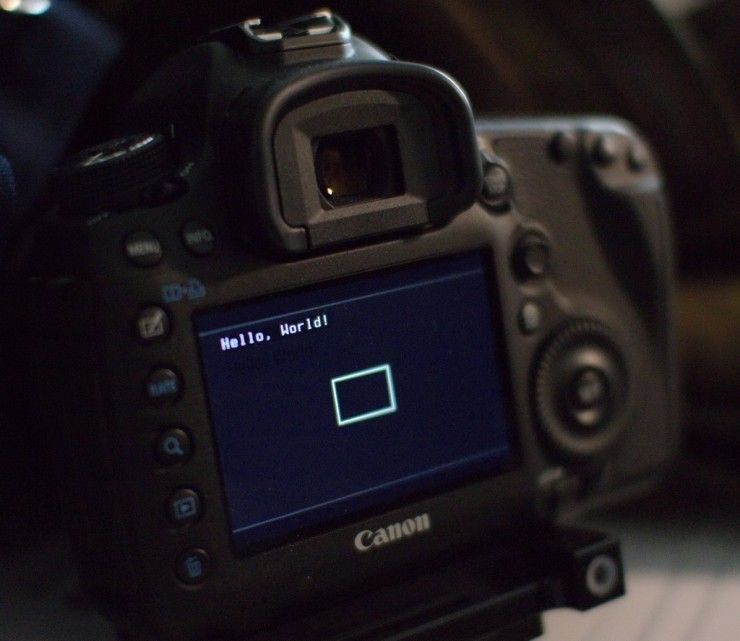

- #Magic lantern canon firmware how to#
- #Magic lantern canon firmware drivers#
- #Magic lantern canon firmware driver#
- #Magic lantern canon firmware full#
- #Magic lantern canon firmware software#
It is not Linux and some other OS, including the manufacturer(s) and knockoffs. I really do not want yet another hacked together operating environment, haphazard community of developers. My main interest is the data that the camera sensor provides, and very precise control over the hardware inside the “camera” that give you latitude to vary how and when the images are captured. Having an equivalent to Tails, for cameras as a distro, could make the path to a more tolerable world shorter. It’s also a specialized knowledge field to use such programmes the right way which few have, especially in conflict zones.
#Magic lantern canon firmware software#
This is really great news for human rights activists and journalists, also it will be possible for them to mail such obfuscated pictures as cats and flowers through ordinary government controlled ISP’s without having to carry any incriminating software or hardware. Usually all that has to be done on a laptop in post processing, which raises further suspicion, especially if you have encryption- and Steganography software installed. The point is that they can rip your card out of your camera at any checkpoint without you being had, as the encryption / steganography happens after each picture is snapped.
#Magic lantern canon firmware full#
Having full control of the hardware could make the SD card and camera appear totally stock to a totalitarian regimes law enforcement with hundreds of non encrypted pictures of cats and flowers, that have been solved. Well Dax, I should have mentioned steganography also. Wake me up when you can a comparable picture quality with the stock firmware… I am still waiting for the CHDK port on DIGIC IV+ and I am not holding my breath for that which easily a few orders of magnitudes easier than this. You might even do worse than the cheapest Chinese cameras that have little R&D efforts put into them other than whatever SDK that the sensors or SoC comes with. What you don’t get is the fancy algorithms (some secret sauce and no doubt some with patents) that make their camera special to their competitors.

A RTOS might be better suited than linux as you aren’t really benefiting from all the linux drivers. While it might be a pain, but there is no need to throw away everything and start from scratch just because you want linux. Those code calls the existing framework and low level signal processing onto of the existing environment to customize the firmware to the liking. There is no denying that the application code is lacking and that was why there are these alternate run time firmware patches.
#Magic lantern canon firmware drivers#
Surely you can replace the os with linux, figure out and write your own the low level device drivers by reverse engineering the existing code.
#Magic lantern canon firmware driver#
There is the low level device driver that deals with the devices, the signal processing code that has the Canon’s special sauce for noise reduction, calibration etc and then the upper level of application code that does the stuff etc. I think of the camera firmware as multiple levels. Posted in digital cameras hacks, Linux Hacks Tagged canon, Canon EOS, firmware, linux, magic lantern Post navigation Here’s your chance to polish those kernel porting skills you’ve been holding in reserve. Currently it’s just a proof that you can boot Linux, it’s not actually functional yet. We’re excited to see where this one goes. Now that the Linux kernel is in the picture, ground-up features can be built without dealing with the stock firmware in any way (and without overwriting it).

Commanding the LCD was the last part of the hardware that had previously not been driven directly from Magic Lantern.
#Magic lantern canon firmware how to#
It’s long been a way of hacking more features in but has always been complicated by the fact that you must figure out how to play nicely with the existing firmware. In case you don’t recognize the name, Magic Lantern is an Open Source project that adds features to these high-end cameras by utilizing the bootloader with binary files on the SD card. The hack was facilitated by a recent discovery that the LCD screen on the camera can be accessed from the bootloader. Because of the date of the post we’ve poured over this one and are confident it’s no joke. On April 1st the Magic Lantern team announced a proof of concept that lets you run Linux on a Canon EOS camera.


 0 kommentar(er)
0 kommentar(er)
